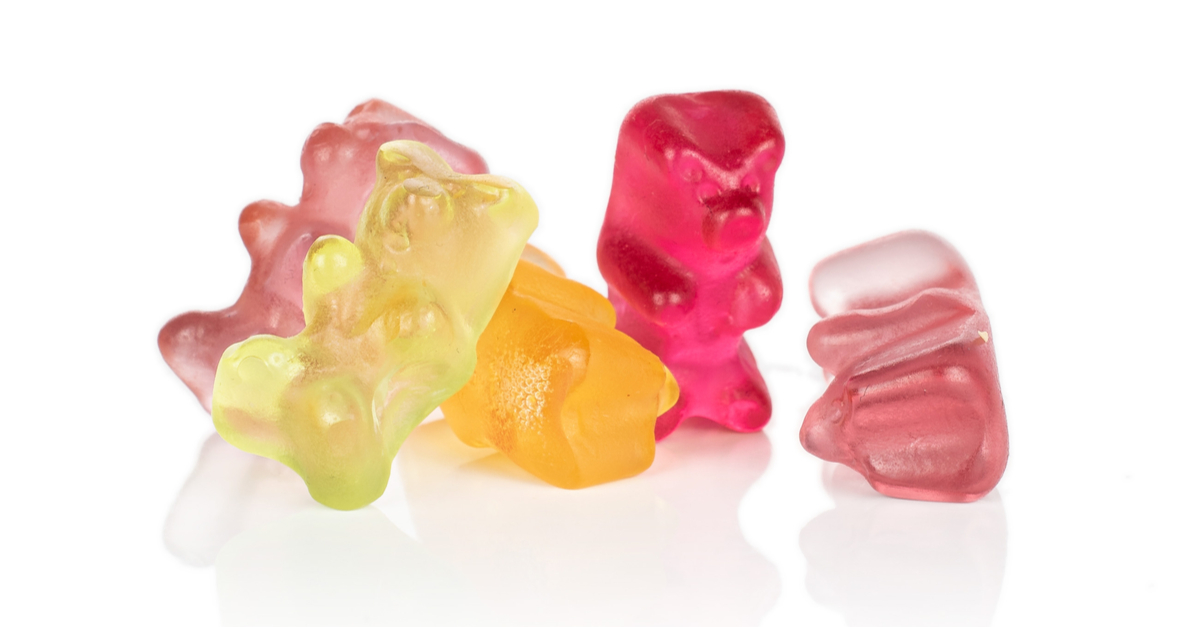The Struggle:
Gummies have become a very popular recipe in recent years. It’s seems everyone is trying to perfect their gummy recipe. But there is an untold truth about gummies that needs to be addressed. All gummies go through a weeping process. I know it’s a hard pill to swallow but there is no gummy recipe that will not require some sort of coating or drying process. This is especially true if you would like to place these gummies into a sealed container or bag and sell them. Gummies are made from sugar, gelatin (or gelling agent), acid, and small amounts of water. Literally everything that is sticky can be made with these ingredients. So, now that we have come to terms with the fact that our gums will have some weeping at some point. What can we do to prevent the weeping and sticking?
“How do I keep my gummies from sticking?”
In Due Time
Gums will weep, but it’s all about how we control that process. If we stick all the gums in a sealed container we are going to end up with a sticky mess. The most common thing that is done with gummies is open air drying. This basically means to leave them in a dry place to dry out for a few days. Gums made from gelatin will benefit from this as it is the easiest to control. Gelatin melts at 97°F so any heated drying would result in a pool of liquid that was once gummies. Gums made from plant based gelling agents generally melt at much higher temperatures. Most plant based gelling agents do not start to melt until they reach 180°F if they melt at all. So a low temp drying process, such as a dehumidifier can help prevent the gums from sticking. The drying process helps form a type of pellicle that prevents moisture from weeping out of the gums.
Drying is not a 100% fix as the gums can still weep after drying especially when coated in a sanding sugar type coating. This is where acid can play a big part in the weeping of the gums. Most all acids are hygroscopic, meaning they look for moisture to absorb. This is why people have such an issue with sour coated gummies. We have had good results with tartaric acid not only for the bright sour flavor but it seems to pull less moisture from the gums.
Gums also are commonly not formed in silicone molds when they are commercially made. Commonly the mold is made from compressed cornstarch with the shape of the mold stamped into it. This does a few things in the gummy making process. The cornstarch can be used over and over again to make molds. Cornstarch also gives a fine coating to the outside of the gums which helps keep the gums separated. And finally the cornstarch doesn’t require a cleaning process that a silicone mold would. The cornstarch can be recreated in a home kitchen setting by simply dusting the finished gums in corn starch. We suggest doing this without skipping the drying process. The reason you want to still include a drying process that moisture and cornstarch will result in a slurry of sorts on the exterior of the gums. With plant based gummies that tend to weep more than gelatin based gummies we suggest waiting until after the drying process before adding the cornstarch.
The best anti-sticking and anti-weeping technique is to coat the gums (after a drying process) in carnauba wax. Carnauba wax is the wax from the leaves of a carnauba palm tree. A small amount of wax is added to a neutral flavored oil and then tumbled on the exteriors of the gummies. If you were to do 100% carnauba wax it would be much like eating straight bees wax. Take it from me it’s not a pleasant experience. But in small quantities it will allow for a shiny coating that will prevent sticking and weeping. This is generally done in a large tumbler, but smaller ones can be found or modified for home use.
The next time you make gummies keep these things in mind so you can hone your recipe in and make it the best it can be. And do not forget that drying process, remember patience is a virtue. Until then, keep cooking.


